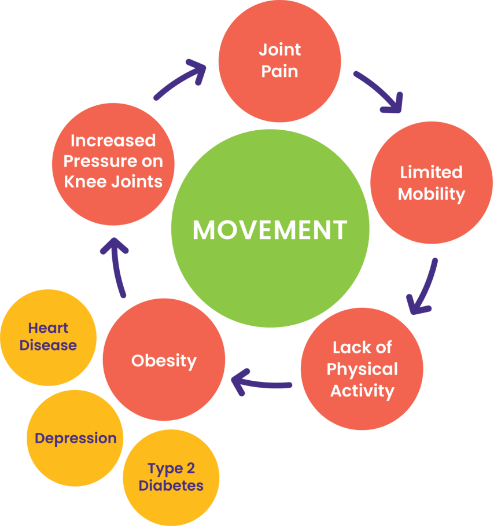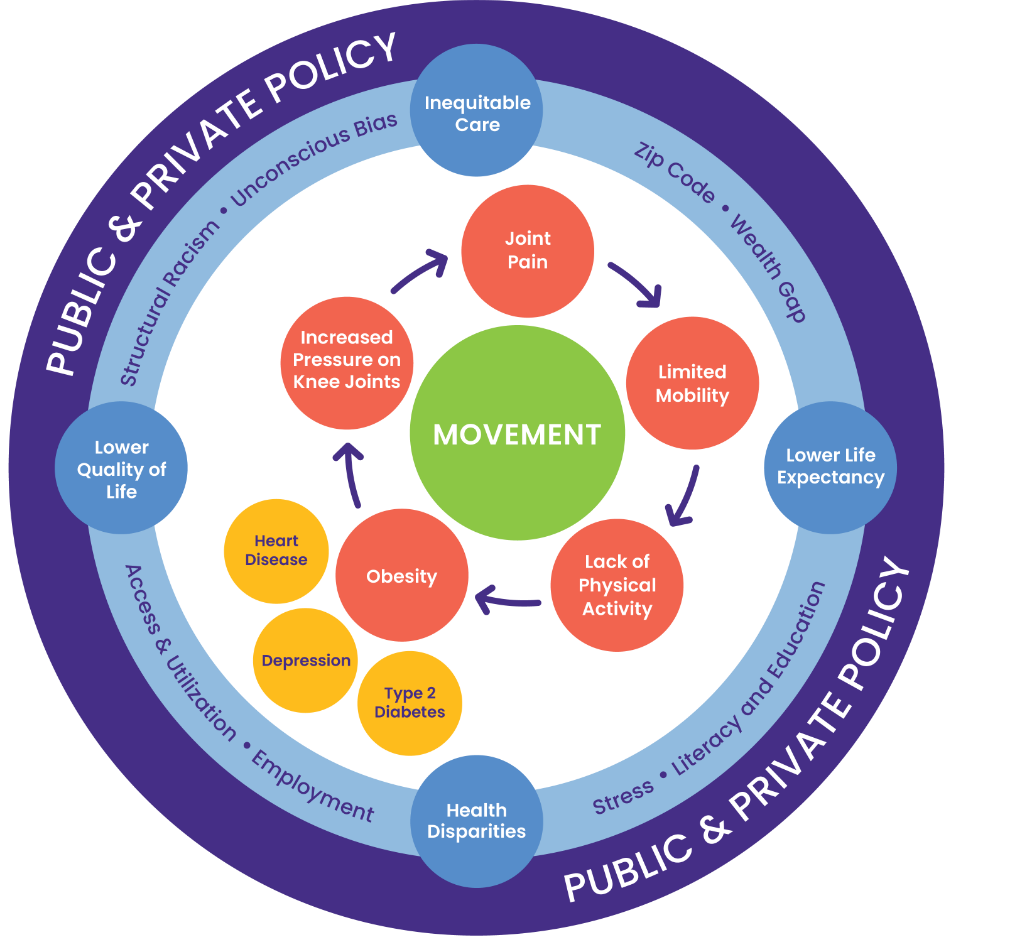
about movement is life
Movement is Life is a multidisciplinary coalition seeking to eliminate racial, ethnic, and gender disparities by promoting movement, which
improves individualsŌĆÖ overall health and quality of life. Movement is LifeŌĆÖswork places a special focus on African American, Latina, and rural women in underserved communities.
We began in 2010 and transitioned to a non-profit in 2022 to expand our partnerships and collaborations with other health equity driven organizations. We focus on community through education, early health intervention, and advocacy.
why movement?
We know that joint pain can lead to decreased physical activity, weight gain, and obesity, creating increased pressure on knee joints.
Decreased physical activity is associated with conditions such as heart disease, type 2 diabetes, hypertension, and depression. Individuals in underserved and rural communities are more likely to get trapped in this vicious cycle, resulting in a shorter life expectancy, lower quality of life, and greater healthcare costs.
But at the core of all this is a potential solution ŌĆö something that can break that cycle. Movement.
The graphic above depicts the Vicious Cycle at an individual level. Through increased movement, we can fight joint pain and its negative impacts.
addressing the social determinants of health
As Movement is Life expanded its focus to include the social determinants of health (or nonmedical influences on health), we realized our representation of the Vicious Cycle needed to grow, too.
The graphic below depicts the Vicious Cycle in its full scope. The blue ring highlights social determinants that contribute to the health equity crisis and the purple ring highlights where policy and advocacy come into play.
Together ŌĆö with support from the nationŌĆÖs top medical professionals, community leaders, public policy advocates and more ŌĆö we can break this vicious cycle.

our goal
Movement is Life is a catalyst for change, energizing multidisciplinary work groups to develop measurable, short-term action plans that move the needle on critical factors driving health disparities. We must find ways to make an impact now, while long-term solutions are being developed.
our strategies include:
RAISING AWARENESS of the epidemic of limited mobility and developing functional solutions to reduce disparities.
STRATEGIZING with healthcare providers, community leaders, and other stakeholders to combat the disparate rate of disabling joint pain among women, African Americans, Hispanics, and individuals in rural communities.
IMPLEMENTING community-based initiatives to combat the alarming rates of arthritis and comorbid conditions that lead to immobility.
EDUCATING patients on the importance of daily physical activity to decrease poor joint health and improve overall health.
